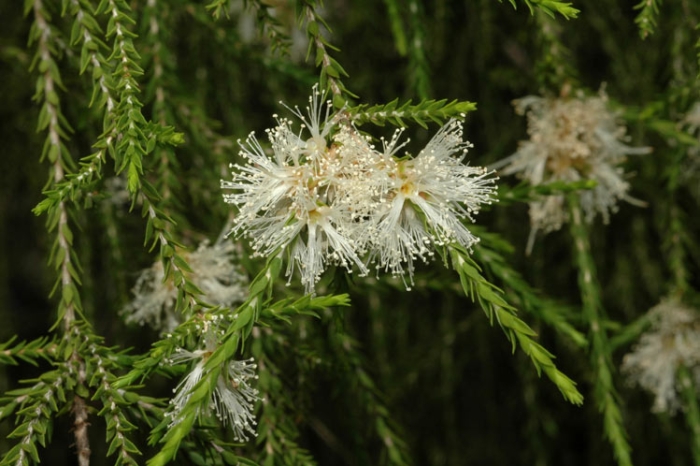Weeping Paperbark
(Melaleuca irbyana)
Weeping Paperbark (Melaleuca irbyana)
/
/

Murray Fagg
CC BY 3.0 au
Image By:
Murray Fagg
Recorded By:
Copyright:
CC BY 3.0 au
Copyright Notice:
Photo by: Murray Fagg | License Type: CC BY 3.0 au | License URL: https://creativecommons.org/licenses/by/3.0/au/deed.en | Uploader: Gderrin | Publisher: Wikimedia Commons | Title: Melaleuca_irbyana.jpg | Notes: User created page with UploadWizard |

































Estimated Native Range
Summary
Melaleuca irbyana, commonly known as Weeping Paperbark, is an evergreen shrub or small tree native to the wallum heathlands and woodlands of coastal Eastern Australia. It typically grows to a height of 10 meters (30 feet) with a dense, rounded canopy and fine, weeping foliage that adds a graceful texture to the landscape. The bark is a distinctive feature, being thick, spongy, and papery, often peeling in layers. The white, scented flowers are showy and arranged in spikes at or near the ends of branches, which continue to grow after flowering. Flowering occurs from September to January, attracting a variety of pollinators.
Weeping Paperbark is valued for its ornamental bark and weeping habit, which make it an attractive feature in gardens. It is used for screening, as a specimen tree, and in revegetation projects where it can provide habitat for wildlife. This species is adaptable to a range of soil types but prefers acidic, sandy soils with slow drainage. It requires medium amounts of water and can tolerate both full sun and part shade. While generally low-maintenance, it can be susceptible to webbing caterpillars and myrtle rust, a fungal disease that affects plants in the Myrtaceae family. Gardeners should be aware of these potential issues and monitor for signs of infestation or disease.CC BY-SA 4.0
Weeping Paperbark is valued for its ornamental bark and weeping habit, which make it an attractive feature in gardens. It is used for screening, as a specimen tree, and in revegetation projects where it can provide habitat for wildlife. This species is adaptable to a range of soil types but prefers acidic, sandy soils with slow drainage. It requires medium amounts of water and can tolerate both full sun and part shade. While generally low-maintenance, it can be susceptible to webbing caterpillars and myrtle rust, a fungal disease that affects plants in the Myrtaceae family. Gardeners should be aware of these potential issues and monitor for signs of infestation or disease.CC BY-SA 4.0
Plant Description
- Plant Type: Shrub, Tree
- Height: 24-36 feet
- Width: 18-24 feet
- Growth Rate: Moderate
- Flower Color: White
- Flowering Season: Spring, Summer
- Leaf Retention: Evergreen
Growth Requirements
- Sun: Full Sun, Part Shade
- Water: Medium
- Drainage: Slow
Common Uses
Bee Garden, Bird Garden, Butterfly Garden, Fragrant, Hummingbird Garden, Low Maintenance, Showy Flowers
Natural Habitat
Wallum heathlands and woodlands of coastal Eastern Australia
Other Names
Common Names: Bushhouse Paperbark, Swamp Paperbark
Scientific Names: , Melaleuca irbyana, Melaleuca tamariscina subsp. irbyana,
GBIF Accepted Name: Melaleuca irbyana R.T.Baker